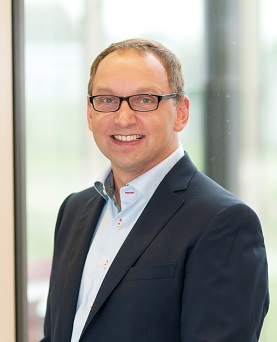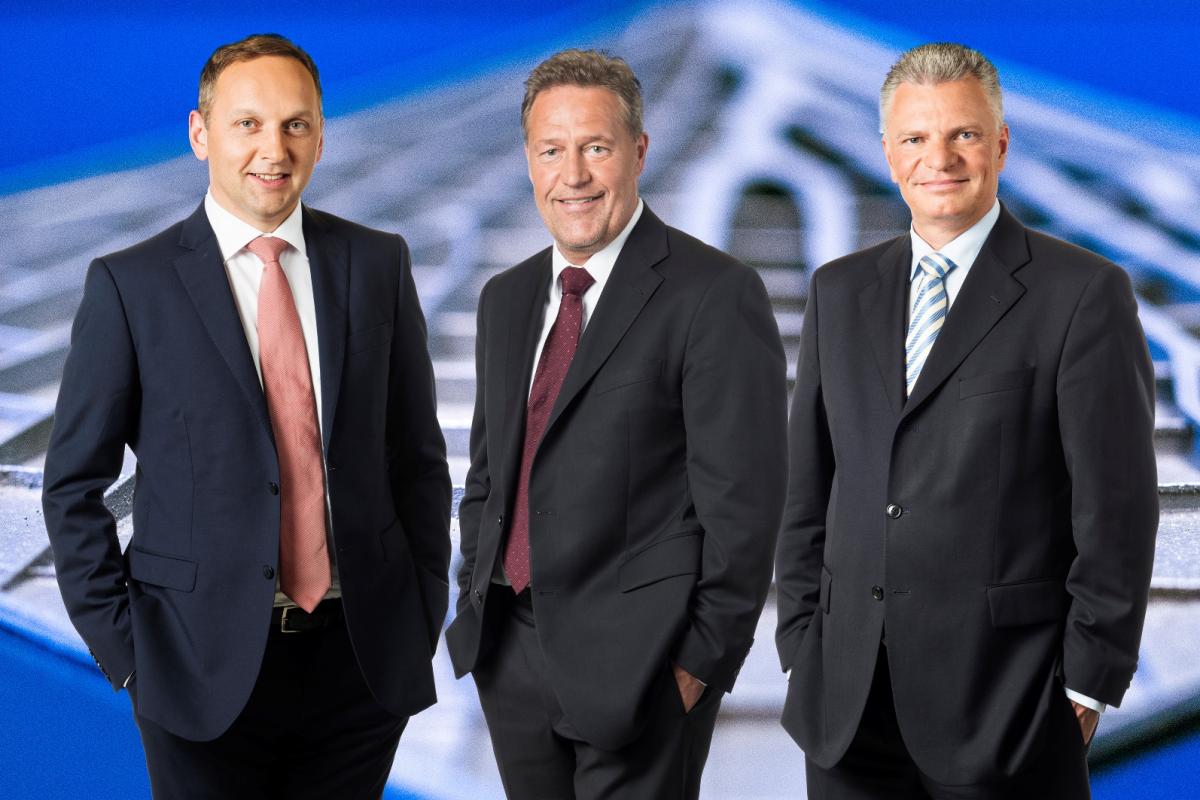
Frank Herzog, President & CEO of Concept Laser: “Belonging to the ‘group of the best’ is a great honor for our team and for me personally. Even though we would have dearly loved to have won the ‘German Future Prize 2015,’ being affiliated with the “group of the best” is an exceptional honor, in particular also recognizing the hard work of my dedicated employees.” (Image courtesy of: Concept Laser)
Industry needs guiding beacons. People and projects act as models for innovations which symbolize change and modifications. Frank Herzog, founder and President & CEO of the machinery and plant manufacturer Concept Laser, was recognized as part of the prize ceremony for the “German Future Prize 2015” together with his two project partners as being among the “group of the best.” The official ceremony for all three nominated teams was held on December 2 in Berlin in the presence of the President of the Federal Republic of Germany Joachim Gauck. A permanent exhibition at the German Museum in Munich has showcased the projects of the nominated teams.
The project team, consisting of Peter Sander, Head of Emerging Technologies & Concepts at Airbus, Hamburg, Prof. Dr.-Ing. Claus Emmelmann, CEO of Laser Zentrum Nord GmbH, Hamburg, and Frank Herzog, founder and President & CEO of Concept Laser GmbH, were included among the “group of the best” with their project entitled “3D Printing in Civil Aircraft Manufacturing - a Production Revolution is Taking Off.”
Frank Herzog: “Belonging to the ‘group of the best’ is a great honor for our team and for me personally. Even though we would have dearly loved to have won the ‘German Future Prize 2015,’ being affiliated with the “group of the best” is an exceptional honor, in particular also recognizing the hard work of my dedicated employees. In addition, the high-profile nomination has resulted in a further boost to the profile of our company Concept Laser.”
3D lightweight construction in the aviation industry honored as being “among the best”
The project entitled “3-D printing in commercial aircraft engineering – a manufacturing revolution is taking off” persuaded the jury for the German Future Prize 2015 in respect of its level of innovation and commercial application. The project is in essence about the first, additively manufactured titanium component, known as a “bracket,” on board the Airbus A350 XWB. This is a “bionic” retaining and connecting element which is regarded as making a vital contribution to the lightweight construction of aircraft. The team made 3D printing “ready to fly.”
Success by means of pioneering spirit
Frank Herzog is regarded as a pioneer in the field of powder bed-based laser melting. The existing plastic sintering technology led to development of the LaserCUSING method in 1998.
During his studies Frank Herzog thought that what worked with plastics should also work with metals. Part stress and the failure of metal powder to fuse completely were initially the greatest challenges in the process development. However, these problems were overcome by the hard work put into the development of stochastic exposure and the application of a solid-state laser.
This pioneering work resulted in the founding of the company Concept Laser in the year 2000, which presented its M3 linear prototype machine to the public at the Euromold in Frankfurt in 2001 and, in this way, celebrated its world premiere in the field of industrial 3D metal printing. Concept Laser, which is situated in Lichtenfels in Upper Franconia, were able to supply the first systems worldwide only a year later.
Once an exotic outsider, this additive manufacturing strategy has taken over a wide variety of industrial fields and applications over the years. Over 400 systems installed worldwide speak for themselves. And 15 years of Concept Laser also means 15 years of successful process development with numerous innovations and patents. For example, the company now has its own research and development department with over 50 employees. Furthermore, Concept Laser GmbH is involved in numerous research and development partnerships with universities, technological and scientific institutes and industrial companies. And the company is also the owner of more than 50 granted patents. Concept Laser GmbH has currently approximately 100 pending patent applications and a majority of them will be granted in the near future. The number of inventions applied for patents by the company has been steadily growing.
Concept Laser's 15th anniversary in 2015 is a brilliant performance – and it has the figures to prove it. The growth of + 75 % in 2014 is being consolidated by Concept Laser at a high standard. For example, a total of 110 laser melting systems were delivered in the year 2014. This figure is to rise to 150 systems in 2015. This means growth in sales of + 35% is expected compared to the previous already very successful year.
The LaserCUSING process
The term LaserCUSING, composed of the C from CONCEPT Laser and the English word FUSING (to fully melt), describes the technology. The fusing process uses 3D CAD data to generate components layer by layer. This process allows the production of complex component geometries without tools in order to implement geometries as components that are difficult or even impossible to achieve with conventional manufacturing methods.
The LaserCUSING process is used to create mechanically and thermally stable metallic components with high precision. Depending on the application, it can be used with stainless and tool steels, aluminum and titanium alloys, nickel-based superalloys, cobalt-chromium alloys or precious metals such as gold or silver alloys.
With LaserCUSING, finely pulverized metal is fused using a high-energy fiber laser. The material is solidified after cooling. The component contour is created by directing the laser beam by means of a mirror deflection unit (scanner). The component is constructed layer by layer (with each layer measuring 15-150 μm) by lowering the bottom surface of the build space and then applying and fusing more powder.
Concept Laser systems stand out due to their stochastic control of the slice segments (also referred to as "islands"), which are processed successively. The patented process significantly reduces tension during the manufacture of very large components.

The project team: Dipl.-Ing. (FH) Frank Herzog (Concept Laser GmbH, Lichtenfels), Dipl.-Ing. (FH) Peter Sander (spokesman) (Airbus Operations GmbH, Hamburg) and Prof. Dr.-Ing. Claus Emmelmann (LZN Laser Zentrum Nord GmbH, Hamburg) (left to right) (Image courtesy of: Composing Ansgar Pudenz / German Future Prize)
Chuck Taylor All Star













